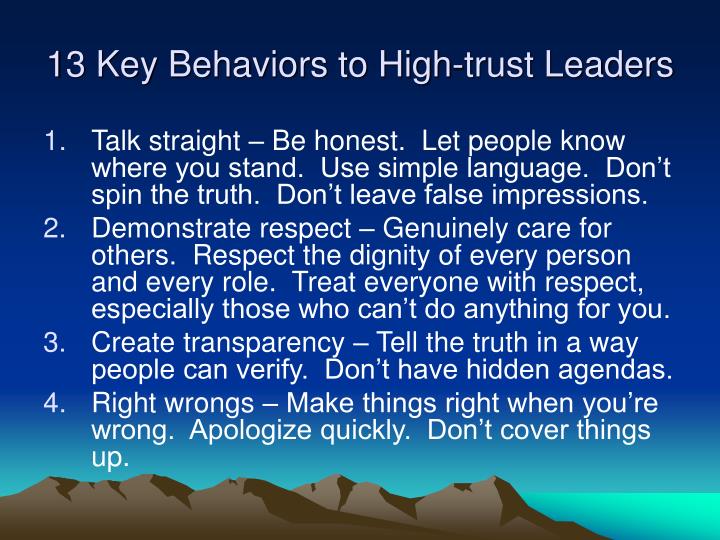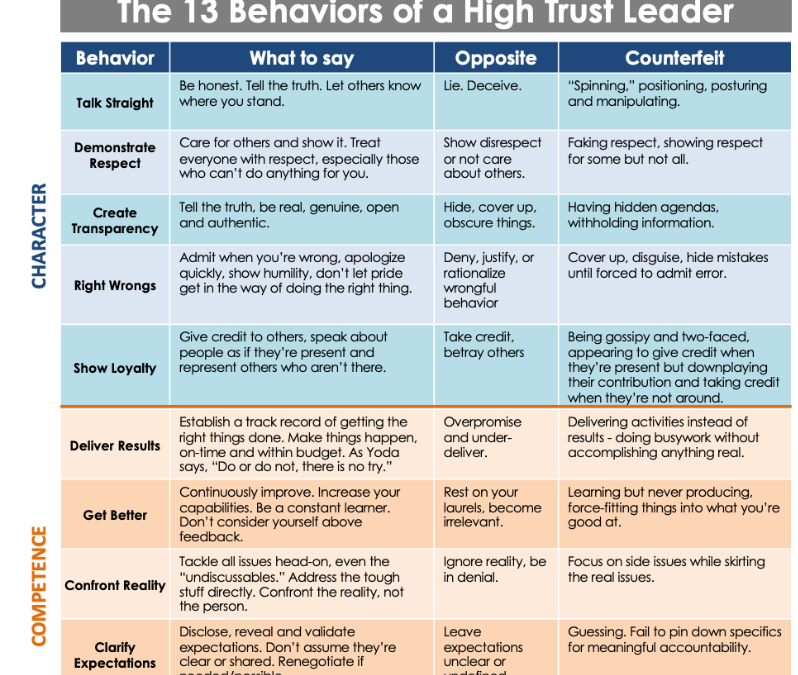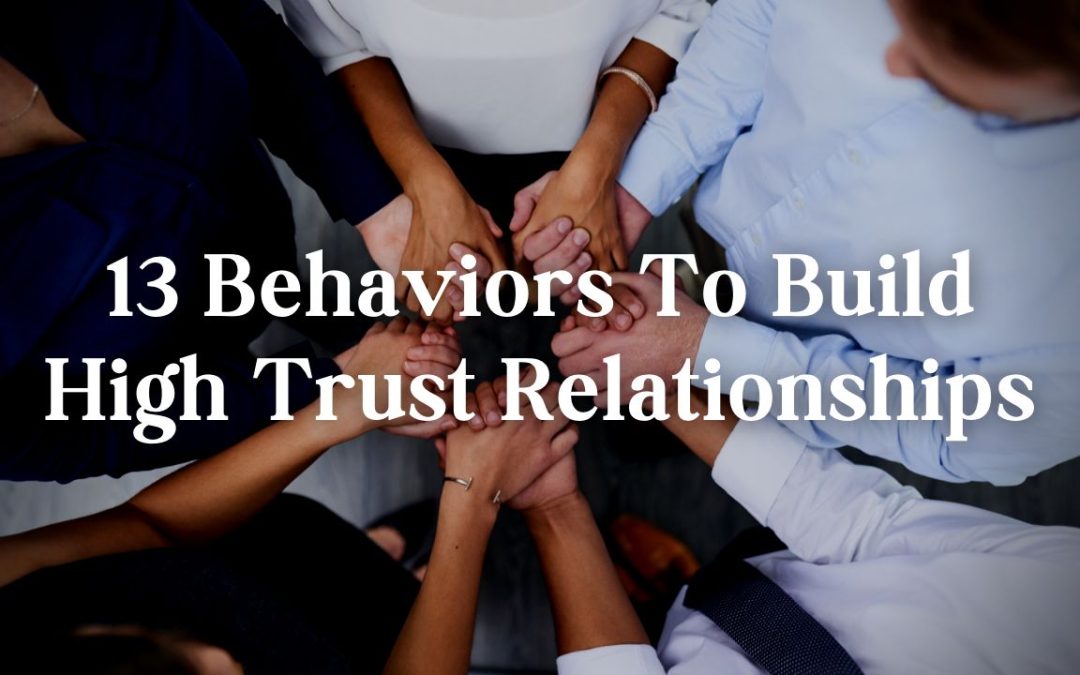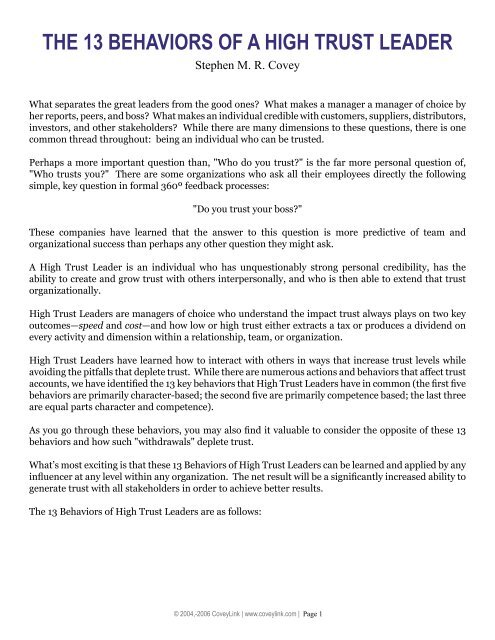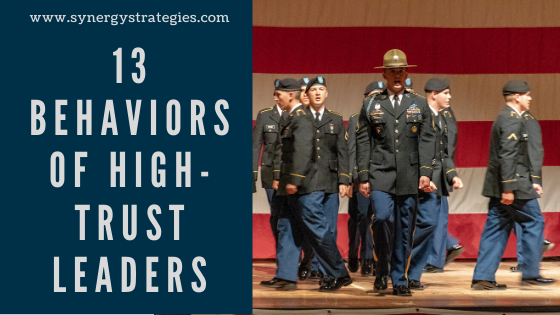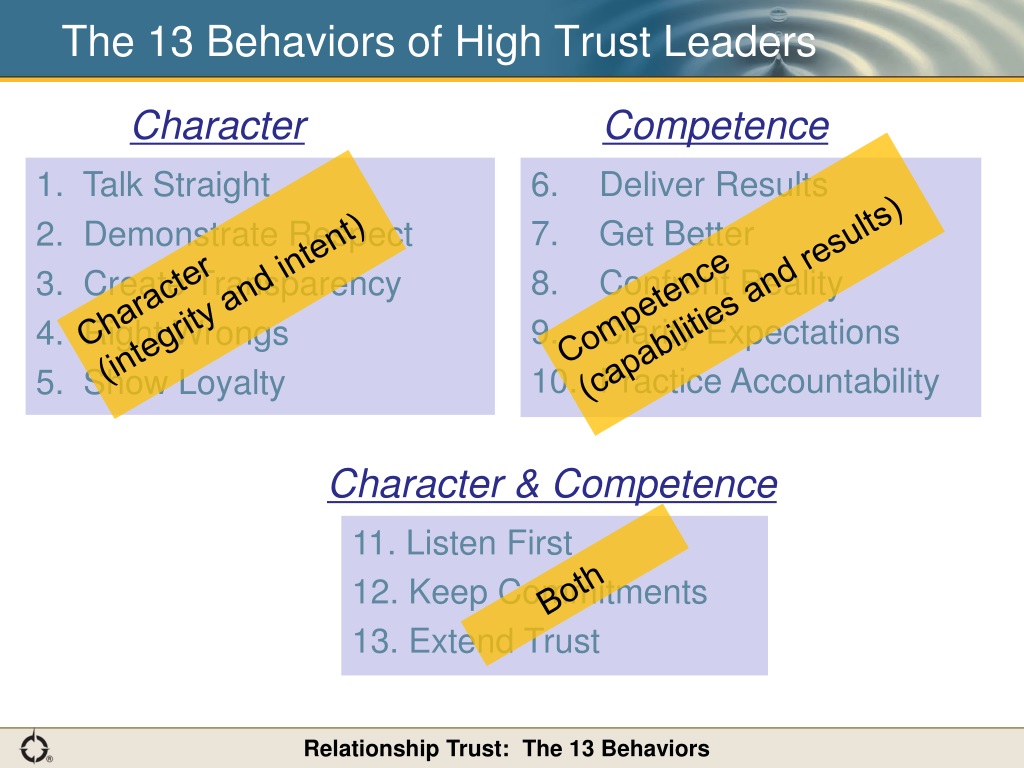13 Behaviors Of High Trust Pdf
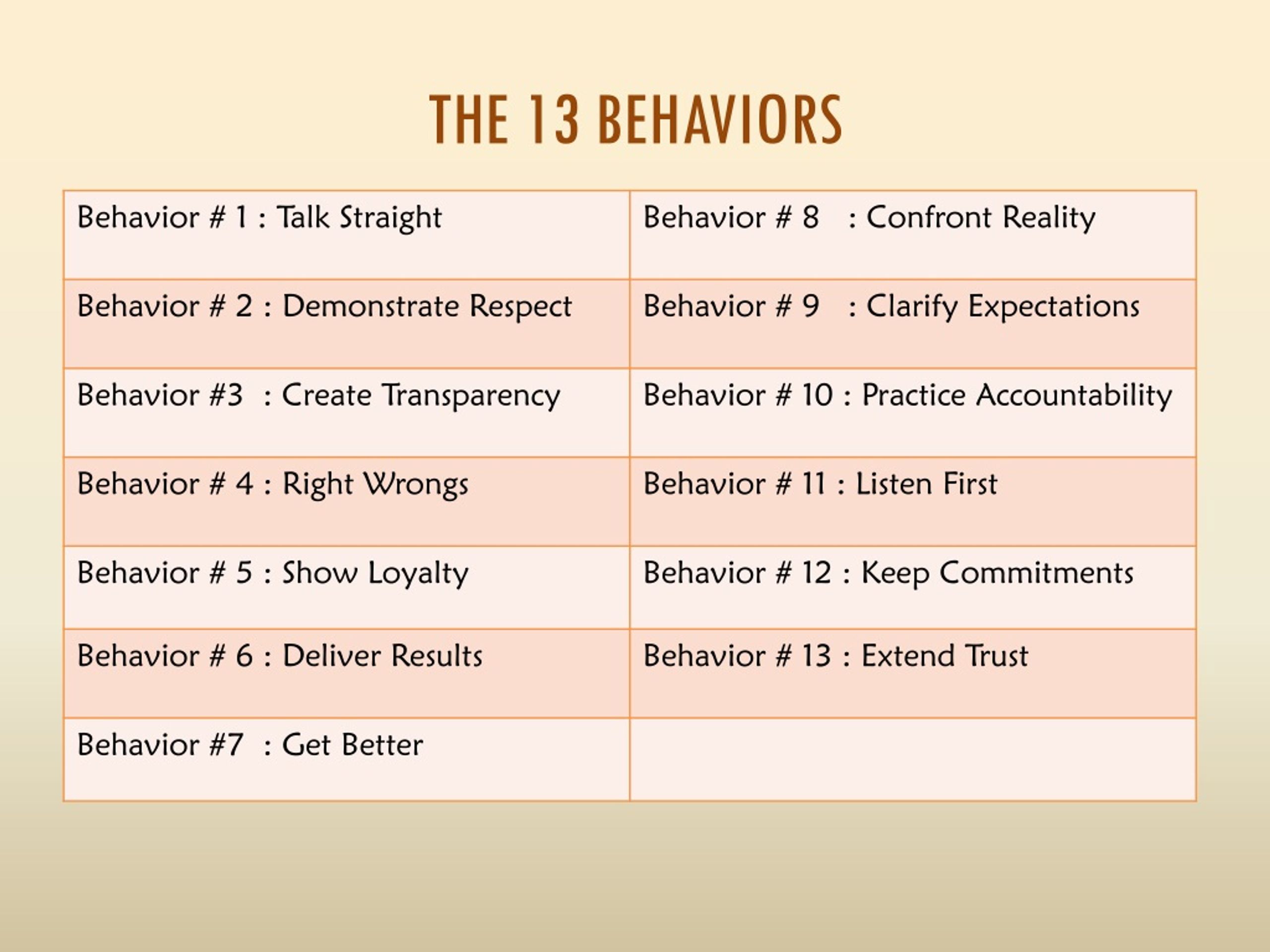
Trust is the bedrock of successful relationships and organizations. Now, a concise guide outlining thirteen behaviors to cultivate high trust environments is gaining rapid traction, circulating widely in PDF format across industries and professional networks.
This isn't just another management fad. The "13 Behaviors Of High Trust" provides actionable strategies to improve communication, collaboration, and ultimately, performance. Individuals and teams are reporting tangible results, driving the document's exponential spread.
The 13 Behaviors: A Blueprint for Trust
The core of the framework identifies 13 key behaviors. These are divided into two categories: character-based behaviors and competence-based behaviors.
Character-based behaviors are essential for building a foundation of integrity. These include: Talk Straight, demonstrate Respect, create Transparency, right Wrongs, and show Loyalty.
Competence-based behaviors focus on delivering results and demonstrating ability. These include: Deliver Results, get Better, confront Reality, clarify Expectations, practice Accountability, listen First, keep Commitments, and extend Trust.
Who is Behind the Framework?
While the "13 Behaviors of High Trust" framework is widely attributed to Stephen M.R. Covey, author of "The Speed of Trust," the exact origin of the circulating PDF is less clear.
Different versions exist online, some with branding from various consulting firms and leadership development programs. This widespread adoption speaks to the framework's perceived value and adaptability across diverse settings.
Stephen M.R. Covey's work has undeniably popularized these principles. The "Speed of Trust" emphasizes that trust is not merely a soft skill, but a hard-edged economic driver.
Why is it Spreading Now?
Several factors contribute to the framework's current viral spread. The increasingly remote and distributed nature of work demands greater trust.
Additionally, economic uncertainty and rapid change necessitate strong, resilient teams. Organizations are actively seeking tools to enhance collaboration and productivity.
The concise nature of the "13 Behaviors" PDF makes it easily digestible and shareable. Unlike lengthy academic papers or complex models, this framework offers immediate, practical guidance.
Impact Across Industries
Early adopters of the "13 Behaviors" framework are reporting positive outcomes. Increased team cohesion and improved communication are frequently cited benefits.
Project managers are using the framework to build stronger relationships with stakeholders. Sales teams are leveraging the principles to enhance customer trust and loyalty.
Human resources departments are incorporating the behaviors into leadership development programs. This highlights a growing recognition of trust as a critical leadership competency.
Where to Find the PDF and How to Use It
A simple online search for "13 Behaviors Of High Trust PDF" will yield numerous results. Exercise caution when downloading files from unknown sources to avoid malware.
Many reputable websites and consulting firms offer versions of the document. Begin by assessing your own behavior and identifying areas for improvement.
Share the framework with your team and encourage open discussion about trust. Implement strategies to reinforce these behaviors in your daily interactions.
Concerns and Criticisms
While the framework is generally well-received, some argue it oversimplifies the complexities of trust. Building genuine trust requires more than simply adhering to a checklist.
Others caution against using the framework in a manipulative or transactional way. Authenticity is paramount; trust cannot be faked.
The behaviors must be genuinely internalized and consistently demonstrated. A superficial application will ultimately erode trust rather than build it.
Next Steps and Ongoing Developments
The ongoing discussion surrounding the "13 Behaviors of High Trust" suggests a growing awareness of trust's importance. Expect to see further refinements and adaptations of the framework.
Consulting firms are developing training programs based on these principles. Organizations are integrating trust-building activities into their team-building exercises.
The future of work hinges on strong relationships and collaborative environments. The "13 Behaviors" provide a valuable starting point for building that future, and its continued impact is something to watch.

